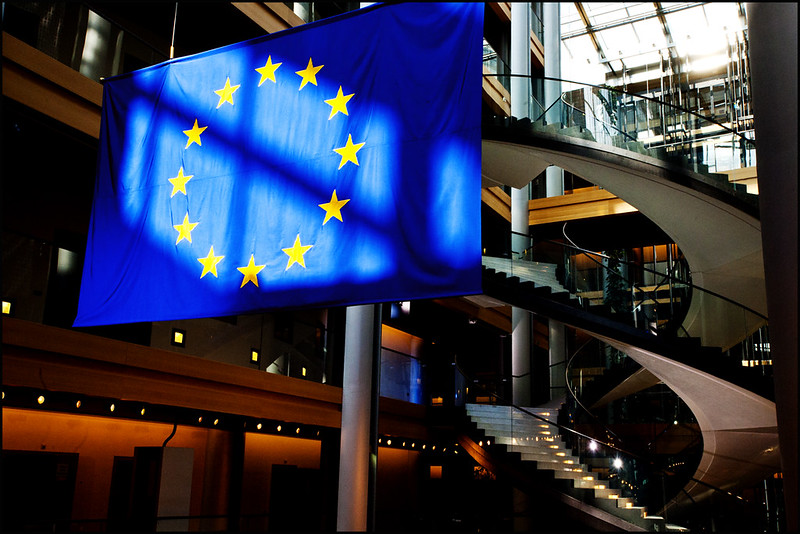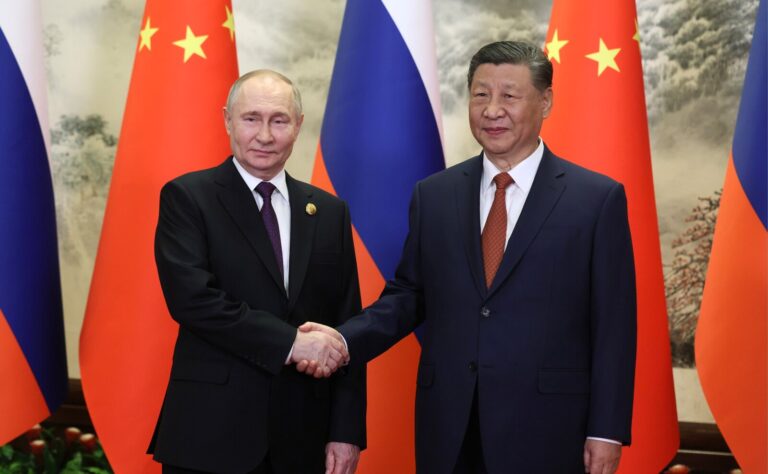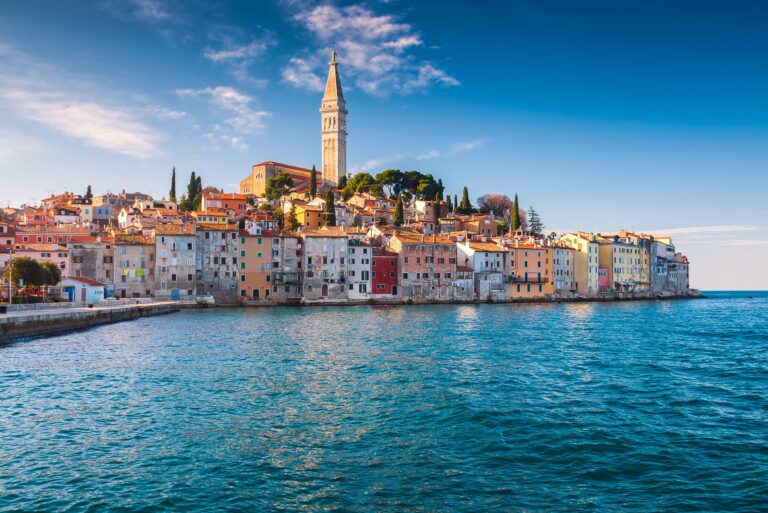
Recently, the EU officially launched the Global Gateway strategy as a new branding for its EU-Asia connectivity programs. This happened more than two months after Ursula von der Leyen first announced the strategy during her 2021 State of the Union speech. While the idea of connecting Europe to Asia is not new, the novel name aims to give a special touch to all the economic, financial, infrastructure, and people-to-people relations packages that the EU proposed not just for Asia, but also beyond.
One can be forgiven if this phraseology sounds familiar.
Indeed, the Global Gateway sounds similar to the Chinese Belt and Road Initiative (BRI). Back in 2013, when the ideas of BRI were launched, the Chinese initiative was received with enthusiasm, anticipating a positive impact on the developing world, because of its promises of increasing investments in infrastructure networks along Eurasia.
But since, a sense of general disillusionment regarding the BRI has emerged, and so have would-be contenders for the role of a key global infrastructure framework.
BRI Lite?
The EU’s Global Gateway did not start from scratch.
Instead, it builds on previous EU connectivity strategies for Eurasia, repackaged under a catchy name that lends itself to easier promotion by European leaders.
The EU wants the Global Gateway to not only mirror the BRI, but to rise above it. “Values-based approach”, “transparency”, “good governance”, “democratic values”, “links, not dependencies”, “sustainable infrastructure” – these were the words that Ursula von der Leyen used to present the initiative. This was another not-so-veiled reference to the BRI, which is now perceived by many as not abiding by standards of transparency, environmental protection or good governance, or is even seen as a debt trap and a new type of imperialism.
Paradoxically, the problem with the Global Gateway is that it may have taken too much inspiration from the BRI.
The Global Gateway is a €300 billion plan. The Global Gateway wants to promote “investments in quality infrastructure, connecting goods, people and services around the world.” The Global Gateway wants to have a healthcare aspect. The Global Gateway wants to “connect institutions and investment, banks and the business community.” The Global Gateway wants to promote “a positive vision of cooperation in the 21st century.” The Global Gateway wants to go to Europe, Asia, Africa, Latin America and the Arctic.
If all this sounds very BRI-style, then, where is the twist? This twist is all about high standards in labor, environmental protection, transparency, rule of law and democracy that the Global Gateway professes to focus on. But will this type of Western standards work in developing economies where the emphasis is placed on building things and less on how they are built? Can the Global Gateway be better than the BRI in such environments? After all, Global Gateway is not alone in a quest for competing with the BRI.
Crowded Playground
The EU’s answer to global connectivity came just months after the US had proposed, during the G7 summit, the Build Back Better World (B3W) initiative, which focuses on “climate, health and health security, digital technology, and gender equity and equality.” As in the case of the Global Gateway, the aim of the project is to create an alternative to the BRI by promoting a “values-driven, high-standard, and transparent infrastructure partnership.”
While B3W wants to create an alternative to the Chinese BRI, it seems to have remained just an American strategy linked too much to the persona of Joe Biden, that may not be fully embraced by other G7 countries, which did not even agree on including its full name in the G7 communique.
The B3W, in turn, was preceded by the Blue Dot Network. Proposed by the US, Japan and Australia in 2019, the project imagined a multilateral initiative aimed at encouraging private companies to invest in infrastructure by providing certifications to those projects that respect high standards of transparency, sustainability and environmental impact.
For the moment, neither initiative has undertaken concrete steps in helping developing countries, beyond creating the image of competition with the BRI. While B3W is a very new proposal which has not had enough time to prove what it is capable of, the Blue Dot Network has already shown that it is not much more than just a buzzword.
This happened because it is very hard to motivate companies to take part in a competition where they do not have much to gain. Investing in infrastructure in developing economies is not so much about big profits, but about improving lives.
Yet, the US or the EU are not alone in the quest to emulate the BRI. Japan is well-known for its connectivity strategies that came long before the Chinese initiative.
As Tokyo is one of the biggest international donors and investors in infrastructure, it has long been searching for a fancy name for its foreign investment strategy. From the concept of “the corridor for peace and prosperity” proposed for the Middle East, to the initiative of the “Arc of Freedom and Prosperity” that would go from Japan to Eastern Europe, to the Asia-Africa Growth Corridor – an initiative proposed together with India, whose goal is to create an economic link with African countries – all these attempts paved the way for the Free and Open Indo-Pacific (FOIP).
While the Japanese initiative does not only focus on infrastructure but also on security or people-to-people relations, the pinnacle of its fame was reached because the US, during the Trump administration, took it over and promoted it as an alternative to China’s foreign policy actions. In Japan’s original vision, FOIP is about connectivity between two continents (Asia and Africa) and two oceans (Indian and Pacific) and aims to improve connectivity through infrastructure development to strengthen economic partnerships or to cooperate in capacity-building assistance in the Indo-Pacific.
Like the BRI, FOIP is a brand for Japanese investments abroad and an umbrella for various projects. However, until now it has not succeeded in boosting Japan’s image around the globe as much as the BRI did for China in its first years of existence.
The list of initiatives similar to the BRI does not end here. Among others, there is a Trilateral Partnership for Infrastructure Investment in the Indo-Pacific between Japan, Australia and the US, or unilateral proposals as those from India (Blue Economy or Act East) or from South Korea during the Park Geun-hye administration (EurAsia Initiative). We thus have a plethora of old and new connectivity strategies that aim to compete with the BRI, but until now, with the exception of FOIP, they lacked staying power.
Can it Succeed?
Having the three most important economic powers in the world aside from China, the US, the EU and Japan, coming up with separate international initiatives to compete with Beijing speaks more about the disunity among these powers and less about the impact on the BRI. In the end, these projects may find themselves competing with each other, as all try to promote a more recognizable brand and a better alternative to the BRI.
As the emphasis of these new initiatives is mainly on infrastructure, in order to compete with the BRI, it is useful to look at the needs of developing economies and compare them with the infrastructure promises that strategies like B3W or the Global Gateway propose.
First of all, these developing regions lack needed infrastructure, but both B3W and the Global Gateway want to promote a type of infrastructure that is sustainable, green and defined by high-quality standards, which also means being more expensive.
The BRI succeeded in gaining many projects in Africa, for example, because it mostly focused on raw infrastructure, without other considerations. While many of the Chinese practices are problematic in the long term, these infrastructure projects are important for countries that cannot afford to apply demanding standards, but desperately need infrastructure in order to develop. This will be B3W’s and the Global Gateway’s biggest challenge: how to build high-quality infrastructure at lower prices, while respecting demanding standards?
On top of this, there is another hurdle: who will pay for this type of projects? Developing economies are not as profitable as developed markets. That is why Western companies have been reluctant to invest in regions that could not guarantee large profits. This profitability mindset is also reflected in the strategies themselves.
The EU and others are not so eager to finance projects that are not economically feasible, although they may improve the region’s development and the lives of citizens. On the other hand, Chinese companies receive considerable subsidies from Beijing and are also able to build infrastructure cheaper, as they do not focus on high standards.
As long as these developing regions will be treated only through the prism of market profitability and first world worries and standards, ignoring their needs or the impact of exigent standards, these strategies will not be much of an alternative to the BRI.
While B3W and the Global Gateway have the potential to make a difference and ultimately motivate China and the BRI to respect higher standards, they also risk failure, as there is an inflation of such initiatives with very few achievements and sloppy coordination among the countries that proposed them. In the end, competition for its own sake is far from a guarantee of these initiatives’ success.
Written by
Andreea Brinza
AndreebrinAndreea Brînză is a Vice President of The Romanian Institute for the Study of the Asia-Pacific (RISAP). Her research focuses on the geopolitics and geoeconomics of China and especially on the Belt and Road Initiative.

